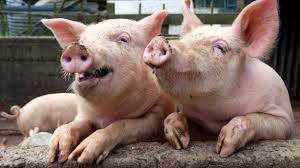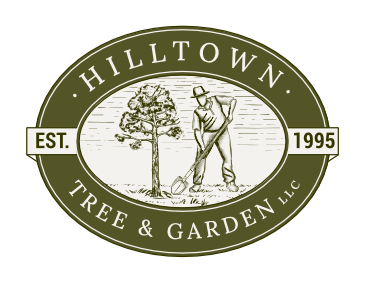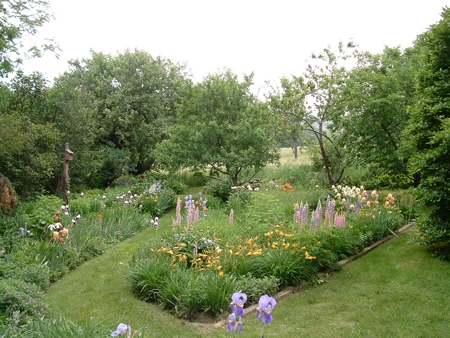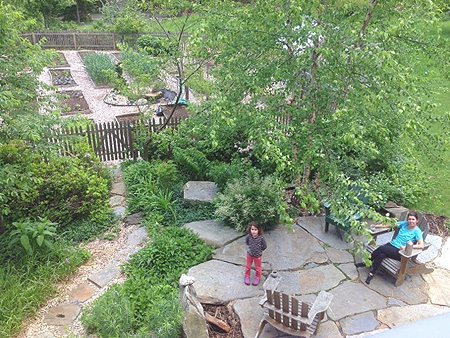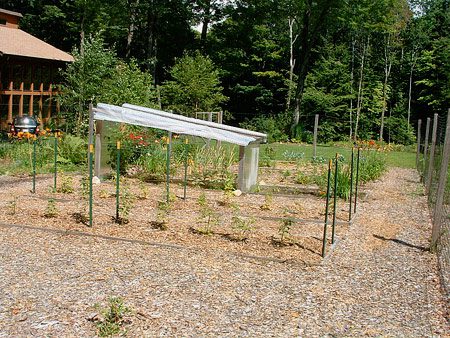Permaculture is defined as “the development of agricultural ecosystems intended to be sustainable & self-sufficient”. Hilltown Tree & Gardens home/office is a pragmatic permaculture model used both for teaching workshops and feeding a family (belly and soul). For over 2 decades Jim has studied traditional & contemporary forms of agriculture and animal husbandry from East Asia to South America and here in the U.S.A.. Jim has created a model that works for his family, land, schedule, personal goals, etc. The model that works for him him, will not necessarily work for others.
In just over an acre, he (and his family) have created: a home, barn, (goats, horses, rabbits, ducks, chickens, pigs & cats) honey bees, orchard, small fruits, vegetables, herbs, ornamental flowering trees, lawn, root cellar, shade trees, wetlands, tall grass wildflower meadows, cutting flowers, solar panels, greenhouse, woodshed, septic system, well, driveway, etc.
The plants comprise 19 different kinds of fruits: apple, plum, peach, pear, asian pear, persimmons, cherry, strawberry (June and ever-bearing), currants, blackberries (thornless and thorny), raspberries (early, mid and late), blueberries (early, mid and late), gooseberries, grapes, pawpaw, watermelon, cantaloupe, beach plum & kiwis. The 12 herbs that are grown are: basil, cilantro, sage, hyssop, catmint, lemon balm, oregano, chives, coriander, thyme, Italian and regular parsley. The 24+ vegetables that are grown are: squash (winter and summer), corn, asparagus, garden greens (mescaline, lettuce, asian greens, etc…) bush & pole beans, cabbage, peppers (bell & hot), okra, sunchokes, leeks, red & yellow onion, Brussels sprouts, edible bamboo, tomatoes, carrots, potatoes, eggplant, kale, pumpkins, asparagus, beets, broccoli and garlic, disease resistant American Chestnuts. The fruits, vegetables and herbs are preserved in a number of different ways allowing for year round consumption. While the entire property is 38 acres, 37 are managed for sustainable timber harvests, wildlife, and water quality in the USDA “Forest Stewardship Program”.
Some examples of permaculture in action on the micro farm:
- horses provide: transportation, fertilizer, grass mowing, exercise, companionship, etc.
- goats: milk, fertilizer, brush and leave recycling, comic relief, etc.
- ducks & chickens: pest control, eggs, fertilizer, etc.
- pigs: meat, fertilizer, land clearing, etc.
- honey bees: honey, wax, plant pollination, etc.
- orchard: food for humans, animals & pollinators, shade, etc.
- vegetables: food, mulch, enjoyment, etc.
- wildflower meadow: food for pollinators, esthetics, etc.
- forest trees: heat, construction materials, pollinator food, water quality, shade, etc
2002 – Landscape Design Phase
The site prior to the construction of the home/office and landscape was a forest.
The wood cut to clear the site was later used to build the barn and home/office along and to provide woodstove heat.

2005 –The design joined the features of the surrounding natural forest into the landscape of a newly built home/office in Chesterfield, MA. Stressing the importance of blending in the house with its environment, stones and rocks were excavated on site for the patio and walkway. Predominantly native & medical/edible plants were planted in the landscaping for low maintenance and four seasons of interest. This also helps create biodiversity, attracting local wildlife such as birds and insects.
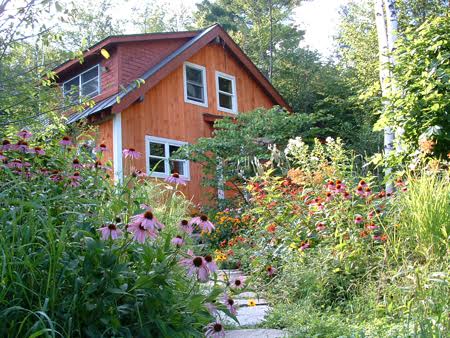
The vegetable raised beds.
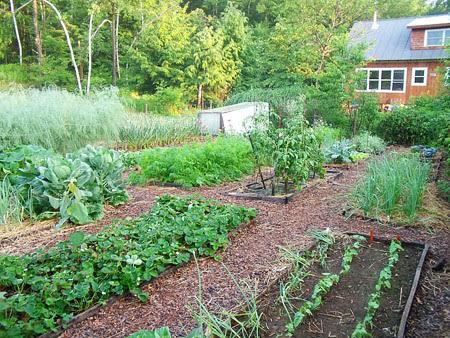
The greenhouse (16’x12′) in mid July is bursting with 5 different kinds of heirloom tomatoes, peppers, cucumbers and herbs. After the final late summer harvest the ducks & chickens are given freedom to roam the greenhouse to rid it of pests & to fertilize and aerate the soil. In early September the birds will be sent packing & cool weather hardy greens like spinach, kale, Chinese cabbage, chard, cilantro, lettuces, etc.. will be planted. These plants, after a fall cutting, will overwinter and will re-sprout and be ready for harvest again in late February. A fitted Goshen Stone floor (excavated from the land) was added to hold the heat on sunny winter days.
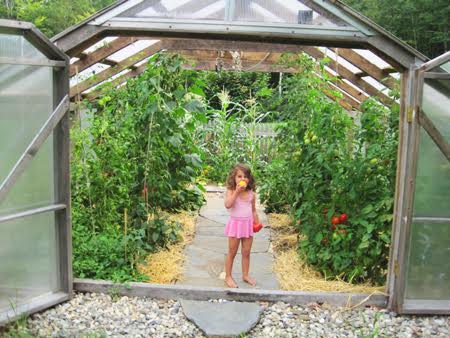
Lunch.
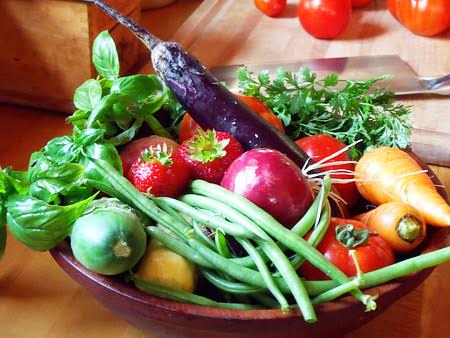
Momma with the new babies.
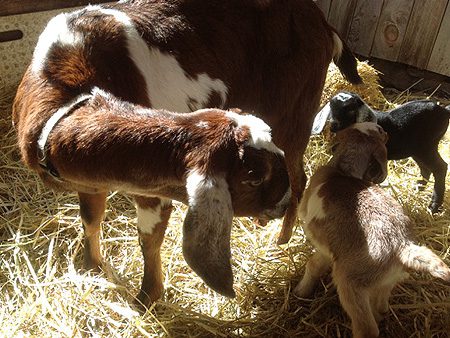
Rockstone & Delhi back from a morning ride.
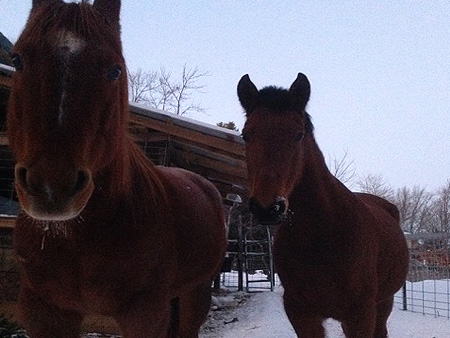
Harvestable kale braving the sub zero days.

A persimmon tree with ripening fruit.
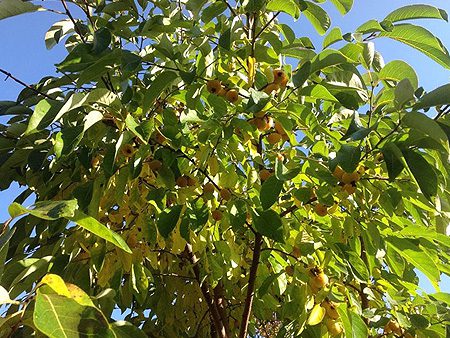
Freshly pressed sweet apple cider starting to ferment to make hard cider. Heirloom apple varieties were planted that are ideal for cider pressing.
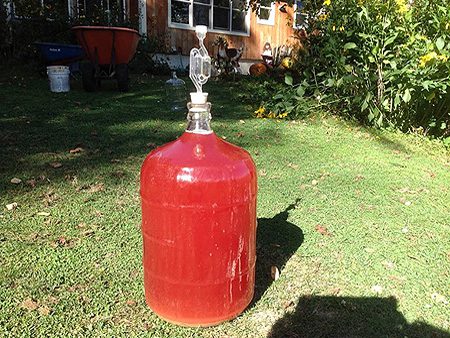
Wintertime pigs.
